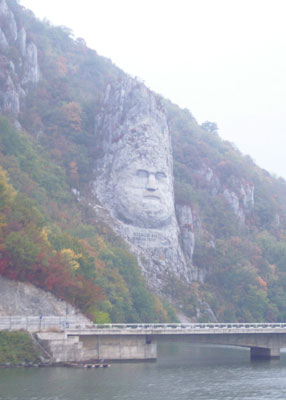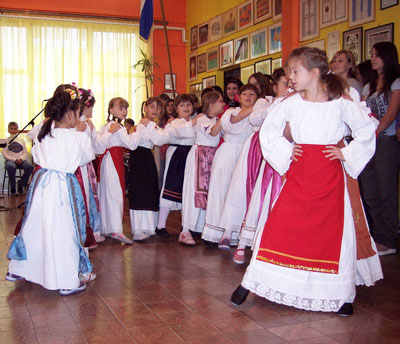Eastern Europe Danube cruise
This item appears on page 63 of the May 2012 issue.
(Second of three parts. Go to part 1)
Upon departing Hungary on my October 2011 “Eastern Europe to the Black Sea” cruise with what on Jan. 27, 2012, would become known as Grand Circle Cruise Line, I began a journey down the Danube that would include brief visits to four additional countries: Croatia, Serbia, Bulgaria and Romania.
Throughout my hosted journey aboard the MS River Adagio, reminders of the horrors of the Balkans Wars and the extreme political oppression of the Communist era were ever present. Despite the current continuing economic woes throughout the region, it was evident in all countries we visited that hard-won political freedoms have been thoroughly embraced.
Croatia
Our Danube cruise continued through peaceful pastoral regions, passing from Hungary into Croatia and arriving at the riverfront city of Vukovar, where the war with neighboring Serbia began in 1991. Vestiges of the conflict still remain.
After a short stroll around the city, we traveled to Osijek, the commercial and administrative center of northern Croatia. It is situated on the Drava River, 15 miles from the mouth of the Danube.
Osijek has been destroyed and rebuilt many times over the centuries, including being rebuilt after the 1991-1995 war between Croatia and Serbia. Our driving and walking tour revealed a mix of architecturally eclectic structures, among them Tyrdja, an early-18th-century military complex, the neo-Gothic cathedral of saints Peter and Paul, featuring a 290-foot spire, and a modern pedestrian bridge across the Drava.
We visited a local school that is, in part, supported by the Grand Circle Foundation. There, we experienced an energetic and most moving music-and-dance performance by the students. I particularly enjoyed having time to talk with the students individually after the performance. Most spoke excellent English.
Later we broke into small groups for a home-hosted lunch featuring traditional regional fare. Although our friendly Croatian hosts spoke little English, we managed to communicate enough to get by and enjoyed the meal and a tour of their rural-style property.
My learning gem for the day was that in 1883 Croatian immigrants to the US imported 1,000 seedlings from the old country, thus beginning the California fig industry. Within a few years, their fig products were winning awards in major US fairs.
Belgrade
Our arriving in Belgrade on a rainy and rather gloomy morning somehow seemed strangely appropriate. The city was built centuries ago on an East-West trade route and served as a gateway city from the Balkans to Europe. Locals advise that the Serbian capital city today is more of a Balkans regional business, meeting and entertainment center than a tourist destination.
The city seemed rather bland in appearance, by European-capital standards, judging from our city tour and my solo pedestrian exploration later. I was impressed by the decision to retain the reminder skeletal remains of two city-center military buildings that were destroyed by NATO missiles in 1999, finally bringing to a halt the brutal genocidal actions of the Serbian nationalist leader Miloševic´.
We visited massive St. Sava, one of the largest Orthodox cathedrals in the world. Construction began in 1935, but, for a host of reasons, its interior remains far from completion.
In Belgrade, of greatest interest to me was the Tito Museum, which chronicles the remarkable accomplishments of the charismatic, powerful former Yugoslavian leader. The breakup of Yugoslavia in 1992, due to the Yugoslav Wars, has relegated Marshal Tito to “historic relic” status with the younger generations in Serbia and the other countries comprising the former Socialist Federal Republic.
The next day, we cruised through the inspiring Iron Gates Gorge. The once-raging Danube was raised by a series of hydroelectric dams in the 1960s and is now placid through the two-mile gorge. The weather remained uncooperative, but, despite limitations on photography, passengers enjoyed this scenic treasure in the fog and mist.
In part three I will report on Bulgaria and Romania and offer river cruising tips.
Before you cruise…
For complete details regarding the “Eastern Europe to the Black Sea” cruise as well as a broad range of other river cruises and land tours worldwide, contact Grand Circle Cruise Line (Boston, MA; 800/221-2610).
Keck's Beyond the Garden Wall
❝The nature of unabated power in the human kind is to be corruptive
Is not the rarest revelation resultant from an examination of the history of governance that of a truly benevolent dictator? ❞
— Randy sermonizing hope for the future direction of the body politic in the sovereignties of Eastern Europe and beyond


